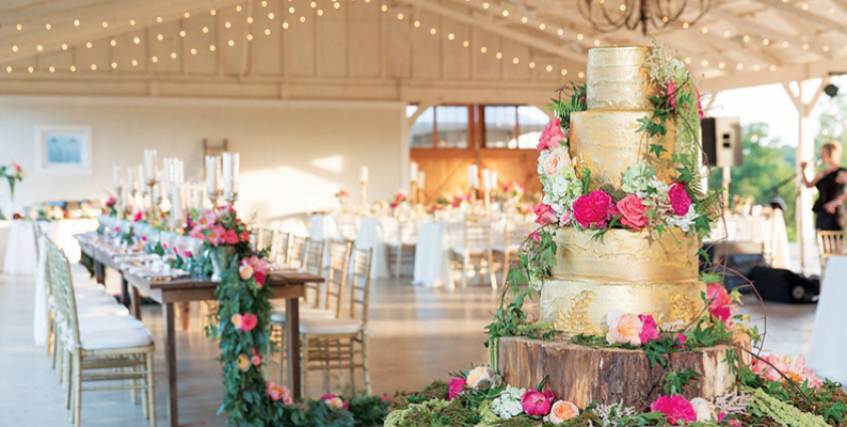Wedding Meals in Different Cultures

Weddings have been one of the most important celebrations all over the world. As the ceremonies differ in each culture, society and country, the dishes they choose for this important day also differ.
In this article, we will tell you about the differences in food and presentation and the reasons behind them.
UK Wedding Dinners

When the royal family announced their wedding cake preferences, it was revealed that the British had a nostalgic and traditional taste. Prince William opted for his childhood favourite, the chocolate and biscuit cake, while Kate Middleton opted for the traditional multi-layer fruit cake.
In medieval England, wedding guests brought small cakes for the bride and groom. These cakes are often flavored with fruits, which symbolize fertility, abundance and fertility. It was decorated with marzipan and different candies called “royal icing”. This plastic ornament on the top floor of the cake was kept for the couple's anniversary according to American traditions, and for the christening cake of the couple's first child, according to British traditions.
Turkey Wedding Dishes

Turkish weddings are very interesting as they involve lots of people, music and food. The whole family gets together to make it an unforgettable moment. The special dishes that start with the hors d'oeuvre plate and serve traditional Turkish dishes are usually followed by a special meat-based main course. During the wedding, a magnificent multi-layered cake is cut by the bride and groom and offered to each other. Weddings with larger budgets are held in a flashy venue compared to Western countries. All night long, the young couple dances with all the guests, almost never getting off the floor.
If we look at the old times, although it differed according to the region, the weddings in the old times used to last three days. Eggplant stew, rice, tattoo, thimble soup and sometimes lamb skewers are served, depending on the regions. Soups occupy a central place on the Turkish table. Wedding soup is also served at various events and the meaning of the dish is "Wedding soup", just like its name.
Italy Wedding Dishes

Italians know how to celebrate: traditional wedding receptions ; It can be served with up to 14 different dishes, including stuffed mushrooms, olives, salami, pickled peppers, calamari, Italian ham and other appetizers, and pasta, salad and soup presentations.
There is also an iconic element of Italian wedding food. Guests are given "bow ties", fried dumplings covered in powdered sugar, which are believed to bring good news. In some cases, guests were given gift boxes filled with marshmallows. According to Italian belief, they represent the bitter and sweet (and of course "good and bad") aspects of life.
France Wedding Dishes

It would not be wrong to call the traditional wedding cake of France assertive. In fact, it reminds one of the most recognizable structures in shape: the Eiffel Tower. This cake, namely “Croquembouche”, is not really a cake. It is a cream cake or profiteroles coated in caramelized sugar (or sometimes dipped in chocolate) and arranged in a tapering tower.
It was decorated with candied almonds, flowers or ribbons sprinkled between cream cakes. Did someone say edible art? Oui!
Norwegian Wedding Dishes

Norway's traditional wedding cake called “kransekake”, literally translated as “round cake”; It also seems appropriate for a variety of celebrations, including baptisms, holiday parties, and dinners. Kransekake is made from almonds, sugar and egg white, and is made of stepped rings that are stacked on top of each other to form a cone-like shape. Ideally, the cake should be soft and easily chewable, but durable enough to stand up during the ceremony. Sometimes a bottle of wine is placed in the centre: a wise choice of building materials!
Chinese Wedding Dishes

In traditional Chinese weddings, 12-14 different meals are served. Wild geese, which often mate and migrate together for a lifetime , are presented as symbols of marital bliss and fidelity.
Other iconic dishes include the Peking duck, also known as the "red" dish, the color of good fortune. Other common dishes are sea cucumber, shark fin soup, roasted baby pig, sweet red kidney bean soup, and brioche.
Indian Wedding Dishes

Among the wonderful colors, Indian weddings still stand out with flowers, henna, veils, music and food. The wedding feast is a kind of marathon, as the festivities can last for a week.
During the extended celebration, guests taste a variety of Indian dishes such as naan, curry and baked potatoes. After the wedding, non-vegetarian foods such as alcoholic beverages begin to be included with meals.
Indian weddings do not have a wedding cake, but it is customary for the bride and groom to feed each other with pieces of sweet food (such as honey and yogurt).
Brazilian Wedding Dishes

When it comes to the wedding meal, Brazilians name it very descriptively: the cookies served at the wedding are called Casadinhos, which means "married".
The inside of a kind of sandwich-shaped marmalade cookies; It is filled with honey, cream or jam. One by one, they are rolled and dipped in sugar. These cookies, called "Bem casados", symbolize the sweet harmony and togetherness of the bride and groom.
Moroccan Wedding Dishes

Most Moroccan weddings and related celebrations can last for days, which means many meals. Tagine (a type of stew), a traditional Moroccan treat, is usually served according to family tradition.
For dessert, instead of one big cake, there is a huge fruit basket hanging around. But don't worry, if you're attending a Moroccan wedding, they'll probably send you home with a fudge box full of pastries.
Germany Wedding Dishes

“Yes!” to them when they propose a hochzeitssuppe at a German wedding. say.
Hochzeitssuppe literally means wedding soup, and this is a light, juicy soup containing vegetables and small meatballs. Although it looks like a relatively simple soup, traditional recipes can take up to five hours to prepare.
No doubt it's for special occasions!
